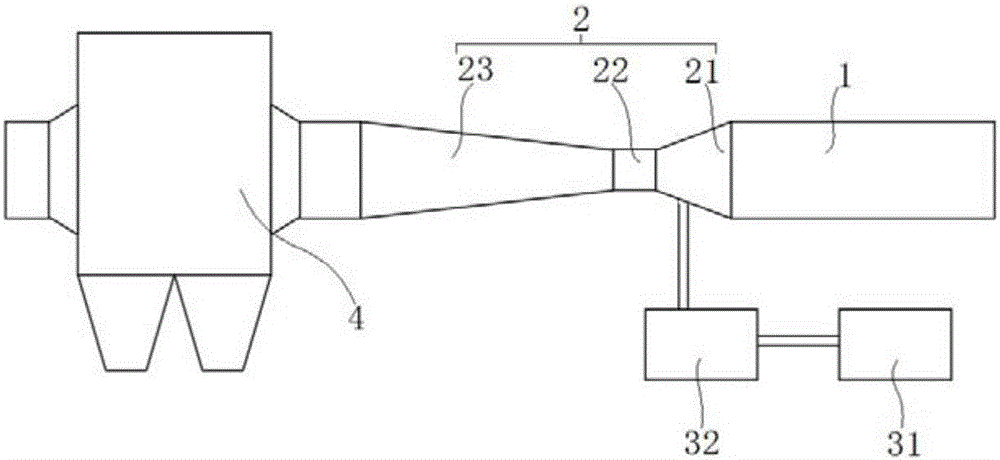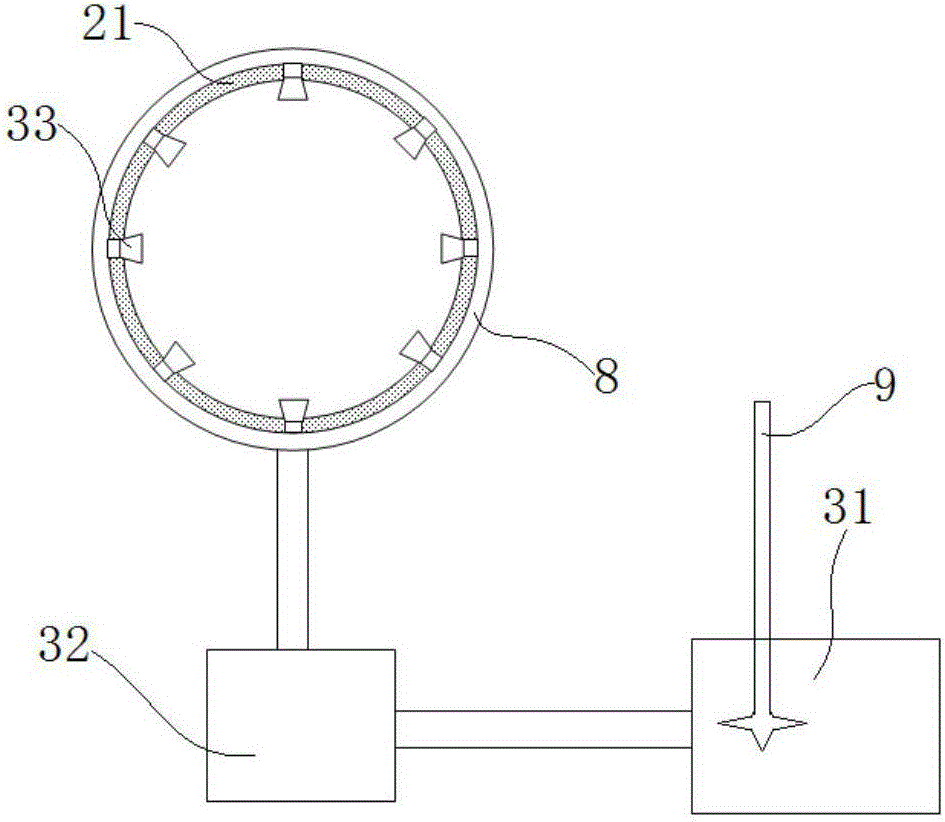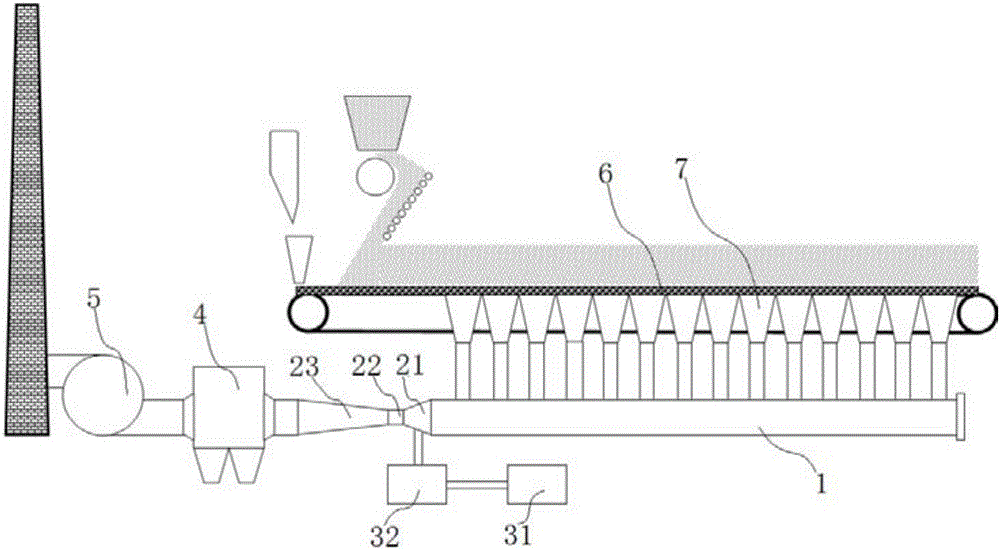Iron ore sintering flue gas PM10 and PM2.5 emission reduction method
A technology for sintering flue gas and PM10, applied in chemical instruments and methods, separation methods, gas treatment, etc., can solve the problems of large flue gas flow, complex composition, limited emission reduction effect, etc.
- Summary
- Abstract
- Description
- Claims
- Application Information
AI Technical Summary
Problems solved by technology
Method used
Image
Examples
Embodiment 1
[0058] combine Figure 10 and Figure 11 As shown, the emission reduction method of a kind of iron ore sintering flue gas PM10 and PM2.5 in the present embodiment: in the process of iron ore sintering, the agglomeration liquid is sprayed into the flue gas channel of the sintering flue gas, and the fine particles in the sintering flue gas Agglomerates and grows under the action of the agglomeration liquid, and adopts the dust removal device 4 to remove the fine particles that agglomerate and grow.
[0059] The composite agglomerating agent for emission reduction of fine particles of flue gas consists of the following components: 10 g of polyaluminum chloride, 30 g of sodium carboxymethyl cellulose, 30 g of polyacrylamide, and 2 g of additives. The additive is a solid additive, and the additive is composed of activated carbon and coke powder. The additive is composed of the following mass percentages: 90% activated carbon and 10% coke powder. 100μm, coke powder particle size r...
Embodiment 2
[0108] The basic content of this embodiment is the same as that of Example 1, except that the additive is composed of activated carbon and zeolite, and the additive is composed of the following mass percentages: 85% of activated carbon and 15% of zeolite, and the particle size of the activated carbon requires: 74μm≤activated carbon particle size≤100μm, zeolite particle size requirement: 74μm≤zeolite particle size≤100μm.
[0109] Detect the emission concentration of PM2.5 and PM10 in the sintering flue gas after the dust removal device 4, and calculate the emission reduction efficiency of PM2.5 and PM10. The emission reduction efficiency of PM2.5 is 56.4%, and the emission reduction efficiency of PM10 is 49.0%.
Embodiment 3
[0111] The basic content of this embodiment is the same as that of Example 1, except that the additive is composed of activated carbon and zeolite, and the additive is composed of the following mass percentages: 95% of activated carbon and 5% of zeolite.
[0112] Detect the emission concentration of PM2.5 and PM10 in the sintering flue gas after the dust removal device 4, and calculate the emission reduction efficiency of PM2.5 and PM10. The emission reduction efficiency of PM2.5 is 60.2%, and the emission reduction efficiency of PM10 is 48.8%.
PUM
| Property | Measurement | Unit |
|---|---|---|
| Particle size | aaaaa | aaaaa |
| Particle size | aaaaa | aaaaa |
Abstract
Description
Claims
Application Information
 Login to View More
Login to View More - R&D
- Intellectual Property
- Life Sciences
- Materials
- Tech Scout
- Unparalleled Data Quality
- Higher Quality Content
- 60% Fewer Hallucinations
Browse by: Latest US Patents, China's latest patents, Technical Efficacy Thesaurus, Application Domain, Technology Topic, Popular Technical Reports.
© 2025 PatSnap. All rights reserved.Legal|Privacy policy|Modern Slavery Act Transparency Statement|Sitemap|About US| Contact US: help@patsnap.com



